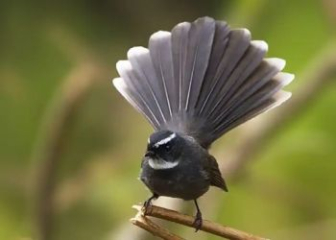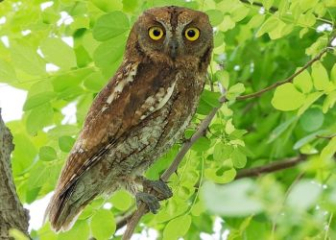Jacobin Pigeons - Detailed Breeding Techniques for Beginners
Blog | by
The Jacobin pigeon has a striking appearance with a unique feather cap surrounding its head and a noble, luxurious demeanor. It is a rare and very popular pet bird.
Jacobin pigeons are one of the most splendid and noble-looking birds. With a round “cap” of feathers surrounding the head like a cloak, Jacobin always attracts people at first sight because of its extremely haughty temperament and rare beauty. Carefully bred and selected over hundreds of years, Jacobin is always a top choice for professional bird players.
If you want to learn more about the origin, habits or techniques of raising Jacobin pigeons, don't miss the article shared by nicebirds below!
Origin of the Jacobin Pigeon
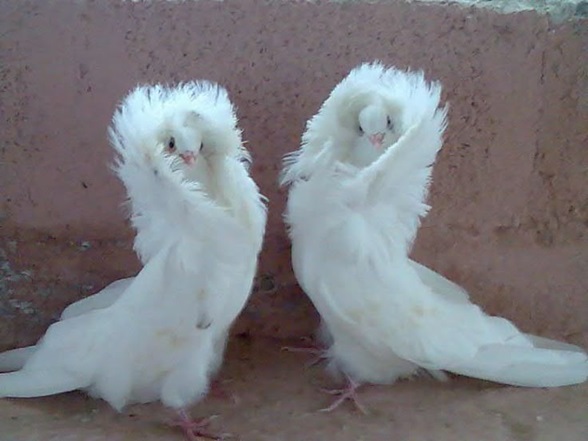
The Jacobin pigeon is a bird of noble beauty.
The Jacobin pigeon is one of the most beautiful, classic and oldest pigeons, having been around since the 16th century. They originate from Asia, specifically India, Pakistan and some countries in the Middle East.
Thanks to their striking beauty, Jacobin pigeons were introduced to European aristocracy, especially in England, France and Germany.
The name “Jacobin” comes from a comparison between the bird's fluted neck feathers and the cloaks or hoods worn by Jacobin monks in France.
Currently, Jacobin pigeons are popularly raised in many countries around the world such as England, America, Germany, Poland, Vietnam, Thailand and Indonesia.
Jacobin Pigeon Appearance
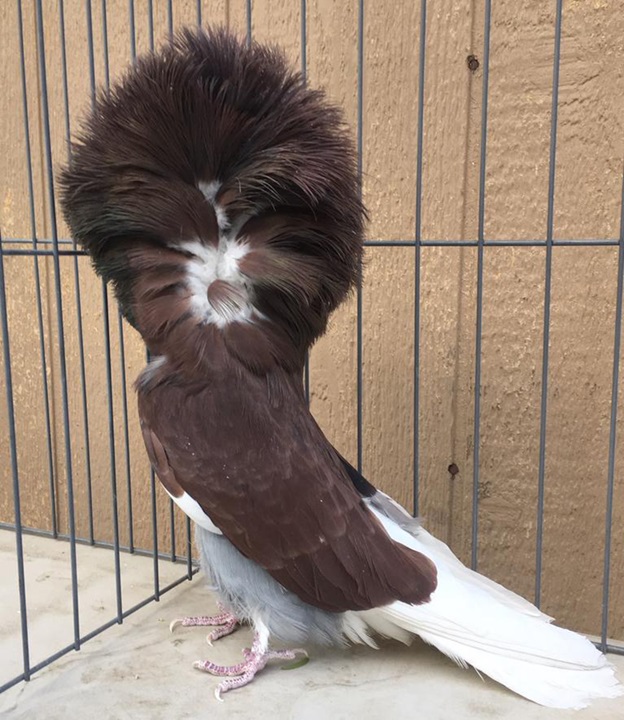
The impressive appearance of a Jacobin pigeon with thick neck feathers.
Jacobin pigeons are famous for their unique appearance and rare aristocratic demeanor, which always attracts all eyes when they appear. Let's learn more about the appearance of this bird.
Featured collar:
This is the most prominent feature of the Jacobin pigeon. With a large, wide neck feather that covers the entire head, nape, and both sides of the face, it looks like a hooded cloak. This neck feather consists of 3 main parts as follows:
- Cowl : The fur on the back of the head that looks like a hood.
- Chain : The fur on both sides of the cheeks, close to the head
- Mane : The hair on the back of the neck, down to the shoulders.
Many people commented that this fur collar looks like a lion's mane, how unique is that?
Size and appearance :
- Body long, medium size.
- Length about 30 - 35 cm
- Standing tall, proud, high neck, broad chest
- Legs are moderately tall, with no hair on the legs.
- Bird eyes are round, bright, usually black or brown, and look very alert.
Color :
Jacobin pigeons come in a variety of beautiful and rare colors, often mixed to create a striking contrast between the flared neck. Some common colors are as follows:
- Snow White
- jet black
- Reddish brown
- Yellow cream
- Ash gray
- Silver Gray
The rarer and more symmetrical the bird's color is, the higher its price will be.
Jacobin pigeon behavior
Below are the special habits and behaviors of Jacobin pigeons. Let's learn more to see if they are different from other pigeons!
gentle, lazy
Jacobin pigeons are very gentle and peaceful, almost never aggressive or fighting with other birds. They are also lazy to fly and move around, mainly walking gently on the ground.
In particular, Jacobin loves a quiet environment and does not like noise or sudden changes. This is also the reason why this pigeon is not raised like normal pigeons.
Very limited visibility
Because they have a large collar of feathers that covers most of their head and eyes, Jacobins have poor vision. They are often slow to react to surrounding stimuli and rarely fly.
Practice careful grooming
Jacobins are very sensitive to dirt or humid air because their neck fur is quite thick, easily matted if not carefully cared for. Normally they also have the habit of preening themselves, but because the neck is difficult to reach, they still need help from the owner to have a clean, beautiful, shiny appearance.
Clumsy in raising children
Although Jacobins are as good at breeding as other pigeons, they are poor at caring for and raising their young because their thick feathers hinder incubation and feeding of the young.
In captivity, many breeders will apply the "nurse" method - using domestic pigeons to incubate eggs and raise chicks for Jacobin pigeons.
Jacobin Pigeon Breeding Techniques in Detail for Beginners
Because Jacobin pigeons have a unique appearance, they need meticulous and patient care to maintain their beautiful and impressive feathers. If you are new to raising Jacobin pigeons, please refer to the techniques below!
Prepare suitable housing
First, you need to prepare a suitable cage for the Jacobin pigeon to grow. Always prioritize cages with large areas because this bird is quite large in size with ruffled neck feathers, plus it often moves and walks continuously in the cage.
You can refer to some of the following suggestions:
- Minimum size for 1 pair 90 x 60 x 60 cm (length x width x height)
- Ideal size for a pair 120 x 80 x 80 cm, the larger the cage the better.
- If kept in groups (aviary), the cage needs to be 1.5 - 2 cm high so they can move comfortably.
- The floor of the cage should be lined with clean sand or rice husks and changed periodically about every 3 - 5 days.
- Provide additional straw nests and wooden boxes lined with sawdust so that birds can lay eggs.
Provide proper nutrition
To help Jacobin pigeons always have shiny, smooth feathers and good health, you need to maintain a reasonable diet, specifically as follows:
- Main food : Rice, millet, ground corn, green beans, pellets specifically for pet birds
- Supplements : Chopped green vegetables, small pebbles, crushed shells to help improve digestion.
- Clean water : Provide enough, change daily, periodically add vitamin C and digestive enzymes.
Cleaning and care of Jacobin pigeons
Because Jacobin pigeons have thick feathers, you need to pay attention to keeping the cage and farm clean, and sunbathing the birds every day to keep them looking their best. You need to do the following:
-
Clean food troughs and water troughs every day.
-
Clean the manure twice a day to keep the cage clean and prevent disease.
-
Occasionally spray disinfectant in the cage.
-
Let the bird sunbathe gently every day for 20 - 30 minutes to make its feathers smoother.
Jacobin Pigeon Disease Prevention
To keep your Jacobin pigeon healthy and free from minor illnesses, you need to pay attention to disease prevention. Here are some ways to help:
-
Clean the barn, remove manure and waste every day, change sand and rice husk bedding regularly to limit bacteria.
-
Keep the cage ventilated, avoid drafts and dampness.
-
Monitor the bird's health and behavior every day to detect unusual signs such as ruffled feathers, laziness, strange-smelling loose stools, unusual neck feather loss, etc. to promptly isolate and treat them.
-
Add multivitamins such as A, D, E, C to increase resistance for pigeons.
-
Give birds water mixed with digestive enzymes to aid digestion and prevent diarrhea.
-
Add more gravel and crushed shells to provide calcium and aid digestion.
Jacobin Pigeon Price List
Currently, the price of Jacobin pigeons ranges from a few hundred to a few million, depending on their feather color, age and origin. You can refer to the following price list!
|
Jacobin pigeon |
Reference price (VND/pair) |
|
Jacobin coat colors are common such as white, yellow, black. |
1,600,000 - 2,000,000 |
|
Jacobin white with red and black |
1,800,000 - 2,500,000 |
|
Red-haired Jacobin |
1,800,000 - 2,500,000 |
|
Jacobin mainstream |
500,000 - 1,000,000 |
|
High quality imported Jacobin |
Over 10,000,000 |
Note:
- You should buy Jacobin pigeons from reputable bird shops or Facebook groups such as "Vietnamese Lion Pigeons - Jacobin Pigeons Viet Nam" to both buy and sell and exchange experiences in raising birds.
- You should observe Jacobin pigeons directly before buying to choose a healthy, agile bird that is free of disease.
Jacobin Pigeon Q&A
Are Jacobin pigeons easy to raise?
Jacobins are quite a “difficult” pigeon for beginners because they need special care and a suitable diet.
How long do Jacobin pigeons live?
On average, Jacobin pigeons can live from 12 to 15 years if well cared for.
Can Jacobin pigeons fly far?
No, Jacobins can only fly short distances, and normally they mostly move around in their enclosure.
Beautiful and impressive Jacobin pigeon images
To help you visualize the unique and impressive beauty of the Jacobin pigeon, we have collected many realistic and clear images below. Let's admire them right away, we guarantee everyone will be "amazed"!

Image of two Jacobin pigeons with impressive pure white feathers.
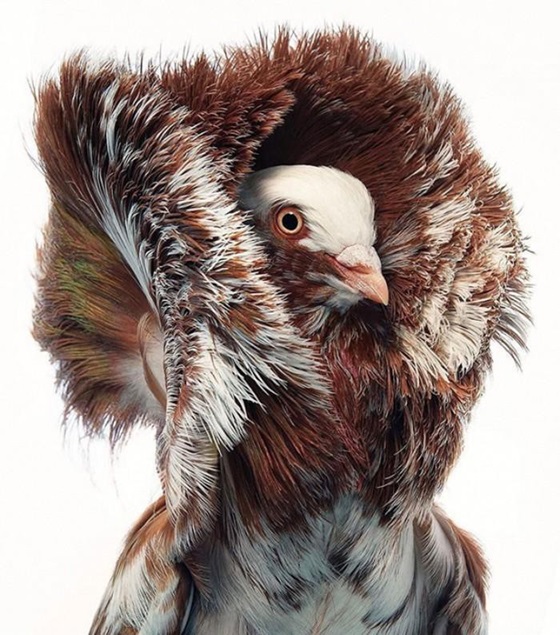
A Jacobin pigeon with a super unique color scheme.
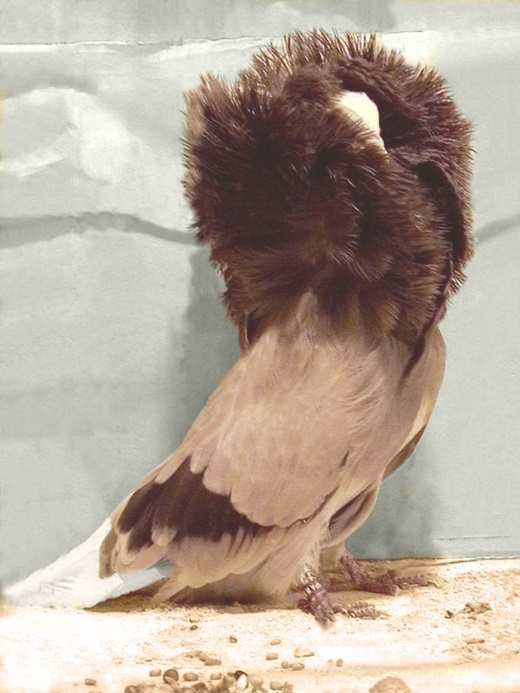
Jacobin pigeons have neck feathers that resemble a lion's mane.
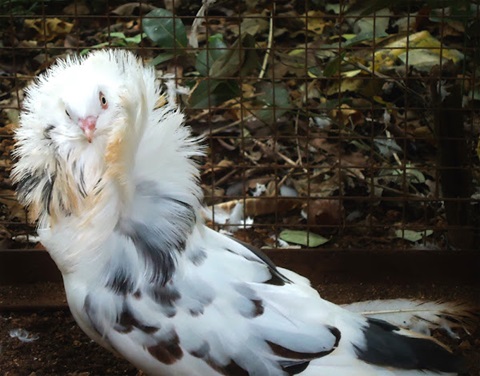
A Jacobin pigeon with impressive plumage
Through the article that nicebirds.net shared above, it can be seen that Jacobin pigeons are not only a beautiful and unique ornamental bird but also have a strong artistic quality. Although they require meticulous breeding and care techniques, in return, Jacobin brings an attractive beauty and shows the class of the breeder, so it is completely worth it, right?
Goodbye and see you again in the next articles of the Blog section to learn more about many species of ornamental birds as well as experiences and techniques for raising and caring for birds effectively!

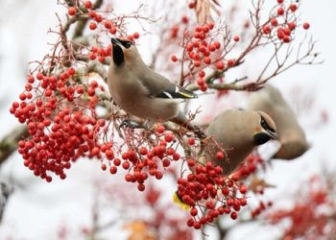

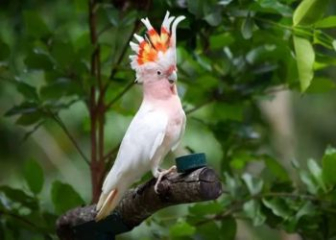
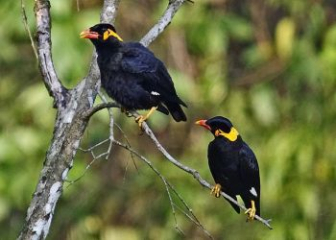
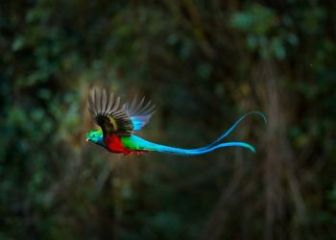





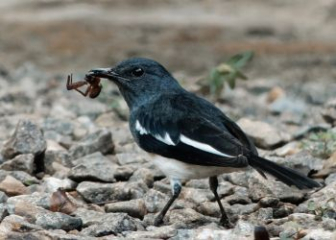
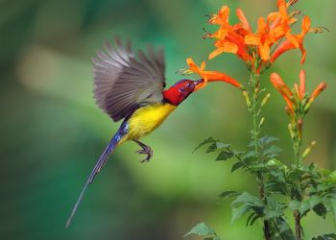


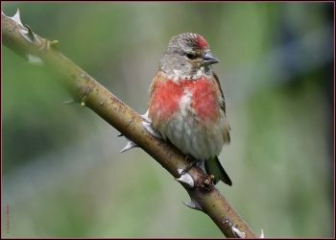
_350x250.jpg)
